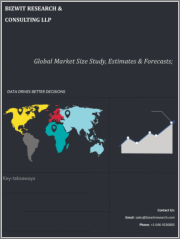
|
시장보고서
상품코드
1520456
통신 전력 시스템 시장 보고서 : 제품 유형, 구성 요소, 전원 공급 장치, 그리드 유형, 지역별(2024-2032년)Telecom Power Systems Market Report by Product Type, Component, Power Source, Grid Type, and Region 2024-2032 |
||||||
세계 통신 전력 시스템 시장 규모는 2023년 53억 달러에 달했습니다. 향후 IMARC 그룹은 2032년까지 시장 규모가 105억 달러에 달하고, 2024년부터 2032년까지 7.7%의 연평균 성장률(CAGR)을 나타낼 것으로 예측했습니다.
통신 전력 시스템은 통신 네트워크의 전력 흐름을 제어하고 모니터링하여 통신 서비스를 지원하는 데 사용됩니다. 통신 전력 시스템은 컨버터, 컨트롤러, 분배기 등 다양한 기술적 요구 사항을 충족하는 수많은 소형 장치로 구성됩니다. 통신 전력 시스템 시장의 진화는 통신 산업이 정보 기술(IT)과 통합된 이후에 이루어졌습니다. 현재 세계 통신 전력 시스템 시장은 빠르게 성장하고 있으며, 통신 타워는 지방과 외딴 지역에도 많이 설치되고 있습니다. 이러한 지역에서는 전력망에 의한 전력 공급이 큰 문제이며, 전력 부족에 직면하는 경우가 많기 때문에 전력 시스템은 통신 서비스를 유지하고 제어하기 위한 비용 효율적인 솔루션이 되고 있습니다.
특히 아시아태평양 및 아프리카 등 개발도상국에서는 농촌 지역의 통신 인프라가 크게 성장하고 있으며, 이는 통신용 전원 시스템 수요를 촉진하는 중요한 요인으로 작용하고 있습니다. 이러한 지역에서 증가하는 가입자 수요를 충족시키기 위해 지방과 외딴 지역에 많은 타워가 설치되고 있습니다. 통신 전원 시스템은 이러한 지역에서 통신 서비스의 효율성과 신뢰성을 향상시키는 데 큰 역할을 하고 있습니다. 또한, 풍력, 태양광과 같은 재생 가능 에너지를 사용하여 환경에 긍정적인 영향을 미치고 온실 가스 배출을 줄이는 하이브리드 전원 시스템의 사용이 증가하고 있습니다.
본 보고서에서 다룬 주요 질문
- 2023년 세계 통신 전력 시스템 시장 규모는?
- 예측 기간(2024-2032년) 동안 통신 전력 시스템 시장 전망은?
- 세계 통신 전력 시스템 시장의 주요 촉진요인은 무엇인가?
- 세계 통신 전력 시스템 시장의 주요 동향은?
- 코로나19가 세계 통신 전력 시스템 시장에 미치는 영향은?
- 세계 통신 전력 시스템 시장의 제품 유형별 구성비는?
- 전 세계 통신 전력 시스템 시장의 전원별 구성비는?
- 세계 통신 전력 시스템 시장의 그리드 유형별 구성 비율은?
- 통신 전력 시스템 시장의 주요 지역은?
- 통신 전력 시스템 산업의 주요 기업은?
목차
제1장 서문
제2장 조사 범위와 조사 방법
- 조사 목적
- 이해관계자
- 데이터 소스
- 1차 정보
- 2차 정보
- 시장 추정
- 보텀업 접근
- 톱다운 접근
- 조사 방법
제3장 주요 요약
제4장 서론
- 개요
- 주요 업계 동향
제5장 세계의 통신 전력 시스템 시장
- 시장 개요
- 시장 실적
- COVID-19의 영향
- 시장 분석 : 제품 유형별
- 시장 분석 : 컴포넌트별
- 시장 분석 : 전력별
- 시장 분석 : 그리드 유형별
- 시장 분석 : 지역별
- 시장 예측
- SWOT 분석
- 개요
- 강점
- 약점
- 기회
- 위협
- 밸류체인 분석
- Porter의 Five Forces 분석
- 개요
- 바이어의 교섭력
- 공급 기업의 교섭력
- 경쟁 정도
- 신규 진출업체의 위협
- 대체품의 위협
- 주요 성공 요인과 위험요인
제6장 시장 분석 : 제품 유형별
- 직류
- 시장 동향
- 시장 예측
- 교류
- 시장 동향
- 시장 예측
제7장 시장 분석 : 컴포넌트별
- 정류기
- 시장 동향
- 시장 예측
- 컨버터
- 시장 동향
- 시장 예측
- 컨트롤러
- 시장 동향
- 시장 예측
- 열관리 시스템
- 시장 동향
- 시장 예측
- 발전기
- 시장 동향
- 시장 예측
- 기타
- 시장 동향
- 시장 예측
제8장 시장 분석 : 전력별
- 디겔 배터리
- 시장 동향
- 시장 예측
- 디젤 솔라
- 시장 동향
- 시장 예측
- 디젤 풍력
- 시장 동향
- 시장 예측
- 멀티 전력
- 시장 동향
- 시장 예측
제9장 시장 분석 : 그리드 유형별
- On-grid
- 시장 동향
- 시장 예측
- Off-grid
- 시장 동향
- 시장 예측
- Bad Grid
- 시장 동향
- 시장 예측
제10장 시장 분석 : 지역별
- 북미
- 시장 동향
- 시장 예측
- 아시아태평양
- 시장 동향
- 시장 예측
- 유럽
- 시장 동향
- 시장 예측
- 중동 및 아프리카
- 시장 동향
- 시장 예측
- 라틴아메리카
- 시장 동향
- 시장 예측
제11장 경쟁 구도
- 시장 구조
- 주요 기업
- 주요 기업 개요
- Delta Electronics Inc.
- Eaton Corporation plc
- ABB Ltd.
- Huawei Technologies Co. Ltd.
- Schneider Electric SE
- Vertiv Group Corporation
- Cummins Inc.
- Myers Power Products Inc.
- Ascot Industrial S.r.l.
- Unipower
The global telecom power systems market size reached US$ 5.3 Billion in 2023. Looking forward, IMARC Group expects the market to reach US$ 10.5 Billion by 2032, exhibiting a growth rate (CAGR) of 7.7% during 2024-2032.
Telecom power systems are used to assist telecommunication services by controlling and monitoring the flow of power over telecom networks. Telecom power systems consist of a number of smaller units that bear various technical requirements such as converters, controllers, distributors, etc. The evolution in the telecom power system market came after the telecom industry got integrated with information technology (IT). The global telecom power systems market is currently witnessing a rapid growth with telecom towers being largely installed even in rural and remote areas. Power systems represent a cost-effective solution for maintaining and controlling telecom services in such areas as grid electricity represents a major challenge and they often face power shortages.
The strong growth of telecom infrastructure in rural areas, particularly in developing regions such as the Asia Pacific and Africa represents a key factor driving the demand of telecom power systems. In order to meet the demand of the rising number of subscribers in such regions, a number of towers have been installed in rural and remote areas. Telecom power systems are playing a major role in improving the efficiency and reliability of telecom services in such locations. Moreover, the rising use of hybrid power systems is also creating a positive impact on the environment by utilizing renewable sources of energy such as wind and solar, thereby reducing the amount of emission of greenhouse gases.
Key Market Segmentation:
IMARC Group provides an analysis of the key trends in each segment of the global telecom power systems market report, along with forecasts at the global and regional levels from 2024-2032. Our report has categorized the market based on product type, component, power source and grid type.
Breakup by Product Type:
DC
AC
Based on the product type, the market has been segmented into direct current (DC) and alternating current (AC) based power systems. Currently, direct current systems dominates the market, holding the largest share.
Breakup by Component:
Rectifiers
Converters
Controllers
Heat Management Systems
Generators
Others
Based on the component, the market has been segmented into rectifiers, converters, controllers, heat management systems, generators and others.
Breakup by Power Source:
Diesel-Battery
Diesel-Solar
Diesel-Wind
Multiple Sources
Based on the power source, the market has been segmented into diesel-battery, diesel-solar, diesel-wind and multiple sources.
Breakup by Grid Type:
On Grid
Off Grid
Bad Grid
Based on the grid type, the market has been segmented into on grid, off grid and bad grid.
Breakup by Region:
North America
Asia-Pacific
Europe
Middle East and Africa
Latin America
Region-wise, the market has been segmented into North America, Asia Pacific, Europe, Middle East and Africa, and Latin America.
Competitive Landscape:
The competitive landscape of the market has also been examined with some of the key players being Delta Electronics Inc., Eaton Corporation plc, ABB Ltd., Huawei Technologies Co. Ltd., Schneider Electric SE, Vertiv Group Corporation, Cummins Inc., Myers Power Products Inc., Ascot Industrial S.r.l. and Unipower.
This report provides a deep insight into the global telecom power systems market covering all its essential aspects. This ranges from macro overview of the market to micro details of the industry performance, recent trends, key market drivers and challenges, SWOT analysis, Porter's five forces analysis, value chain analysis, etc. This report is a must-read for entrepreneurs, investors, researchers, consultants, business strategists, and all those who have any kind of stake or are planning to foray into the telecom power systems market in any manner.
Key Questions Answered in This Report
- 1. What was the global telecom power systems market size in 2023?
- 2. What will be the telecom power systems market outlook during the forecast period ( 2024-2032)?
- 3. What are the major global telecom power systems market drivers?
- 4. What are the major trends in the global telecom power systems market?
- 5. What is the impact of COVID-19 on the global telecom power systems market?
- 6. What is the global telecom power systems market breakup by product type?
- 7. What is the global telecom power systems market breakup by component?
- 8. What is the global telecom power systems market breakup by power source?
- 9. What is the global telecom power systems market breakup by grid type?
- 10. What are the major regions in the telecom power systems market?
- 11. Who are the leading telecom power systems industry players?
Table of Contents
1 Preface
2 Scope and Methodology
- 2.1 Objectives of the Study
- 2.2 Stakeholders
- 2.3 Data Sources
- 2.3.1 Primary Sources
- 2.3.2 Secondary Sources
- 2.4 Market Estimation
- 2.4.1 Bottom-Up Approach
- 2.4.2 Top-Down Approach
- 2.5 Forecasting Methodology
3 Executive Summary
4 Introduction
- 4.1 Overview
- 4.2 Key Industry Trends
5 Global Telecom Power Systems Market
- 5.1 Market Overview
- 5.2 Market Performance
- 5.3 Impact of COVID-19
- 5.4 Market Breakup by Product Type
- 5.5 Market Breakup by Component
- 5.6 Market Breakup by Power Source
- 5.7 Market Breakup by Grid Type
- 5.8 Market Breakup by Region
- 5.9 Market Forecast
- 5.10 SWOT Analysis
- 5.10.1 Overview
- 5.10.2 Strengths
- 5.10.3 Weaknesses
- 5.10.4 Opportunities
- 5.10.5 Threats
- 5.11 Value Chain Analysis
- 5.12 Porters Five Forces Analysis
- 5.12.1 Overview
- 5.12.2 Bargaining Power of Buyers
- 5.12.3 Bargaining Power of Suppliers
- 5.12.4 Degree of Competition
- 5.12.5 Threat of New Entrants
- 5.12.6 Threat of Substitutes
- 5.13 Key Success and Risk Factors
6 Market Breakup by Product Type
- 6.1 DC
- 6.1.1 Market Trends
- 6.1.2 Market Forecast
- 6.2 AC
- 6.2.1 Market Trends
- 6.2.2 Market Forecast
7 Market Breakup by Component
- 7.1 Rectifiers
- 7.1.1 Market Trends
- 7.1.2 Market Forecast
- 7.2 Converters
- 7.2.1 Market Trends
- 7.2.2 Market Forecast
- 7.3 Controllers
- 7.3.1 Market Trends
- 7.3.2 Market Forecast
- 7.4 Heat Management Systems
- 7.4.1 Market Trends
- 7.4.2 Market Forecast
- 7.5 Generators
- 7.5.1 Market Trends
- 7.5.2 Market Forecast
- 7.6 Others
- 7.6.1 Market Trends
- 7.6.2 Market Forecast
8 Market Breakup by Power Source
- 8.1 Diesel-Battery
- 8.1.1 Market Trends
- 8.1.2 Market Forecast
- 8.2 Diesel-Solar
- 8.2.1 Market Trends
- 8.2.2 Market Forecast
- 8.3 Diesel-Wind
- 8.3.1 Market Trends
- 8.3.2 Market Forecast
- 8.4 Multiple Sources
- 8.4.1 Market Trends
- 8.4.2 Market Forecast
9 Market Breakup by Grid Type
- 9.1 On Grid
- 9.1.1 Market Trends
- 9.1.2 Market Forecast
- 9.2 Off Grid
- 9.2.1 Market Trends
- 9.2.2 Market Forecast
- 9.3 Bad Grid
- 9.3.1 Market Trends
- 9.3.2 Market Forecast
10 Market Breakup by Region
- 10.1 North America
- 10.1.1 Market Trends
- 10.1.2 Market Forecast
- 10.2 Asia Pacific
- 10.2.1 Market Trends
- 10.2.2 Market Forecast
- 10.3 Europe
- 10.3.1 Market Trends
- 10.3.2 Market Forecast
- 10.4 Middle East and Africa
- 10.4.1 Market Trends
- 10.4.2 Market Forecast
- 10.5 Latin America
- 10.5.1 Market Trends
- 10.5.2 Market Forecast
11 Competitive Landscape
- 11.1 Market Structure
- 11.2 Key Players
- 11.3 Profiles of Key Players
- 11.3.1 Delta Electronics Inc.
- 11.3.2 Eaton Corporation plc
- 11.3.3 ABB Ltd.
- 11.3.4 Huawei Technologies Co. Ltd.
- 11.3.5 Schneider Electric SE
- 11.3.6 Vertiv Group Corporation
- 11.3.7 Cummins Inc.
- 11.3.8 Myers Power Products Inc.
- 11.3.9 Ascot Industrial S.r.l.
- 11.3.10 Unipower



















